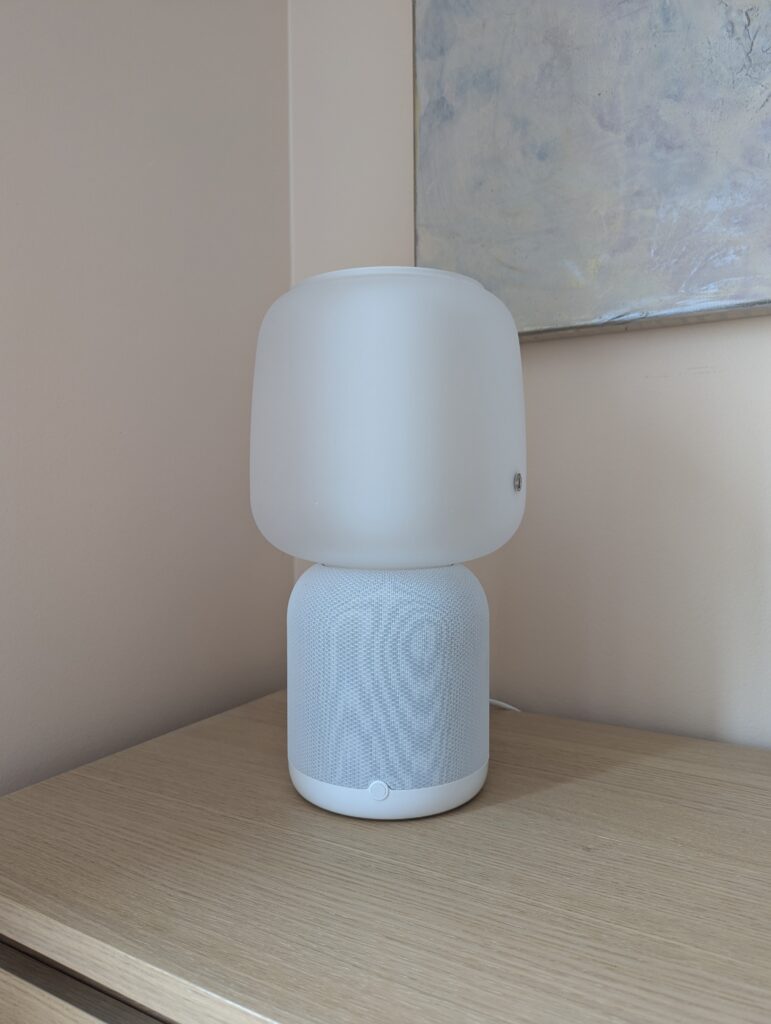Introduction:
Longing for a whole-home audio experience? This article details my Google Home user’s journey through the complexities of multi-room audio, highlighting compatibility issues, synchronization struggles, and the quest for ultimate control.
Brand Specific Systems and Locked Ecosystems:
This adventure began with a Google Home, but its limitations quickly became apparent. Integrating a Google Nest SmartDisplay revealed the closed nature of the Google Chromecast system. As much as I love the Nest SmartDisplay for showing timers etc., a seamless connection with other brands that don’t support ChromeCast is not possible.

The IKEA SYMFONISK Trap: Incompatible Protocols:
IKEA’s SYMFONISK lamp-speaker promised a sleek solution, but the Sonos-based system relied solely on Apple Airplay. Despite legal battles between Sonos and Google, I thought ChromeCast would be supported. You can even add SONOS to GoogleHome. But that’s it! Not possible to play media via ChromeCast on a SONOS speaker.

Enter AirConnect: A Flawed Workaround:
A glimmer of hope emerged with AirConnect, a tool allowing Chromecast devices to function as Airplay receivers. However, music synchronization proved impossible due to protocol translation limitations. The author of AirConnect, this had been analyzed and will not be possible.
Limited Multi-Room Flexibility and Speaker Grouping:
Google Home’s rigid speaker grouping within the app restricts on-the-fly adjustments. Imagine wanting music throughout the house, including the garden, one day and then solely inside on a rainy day. Flexibility is key! This is today only available via the GoogleHome app! Using HomeAssistant or Spotify for example as a central control panel for your music will not be working.
The Allure of 2-in-1 Solutions and the Protocol Conundrum:
Episode’s garden lights with integrated speakers beckoned, but their unknown protocol presented yet another multi-room compatibility hurdle. And it would be the perfect solution in my opinion! Having sound and light creates the most cozy’s athmosphaire.

Searching for the Perfect Solution:
Exploring options like ESPPresence for room-based music control seems promising, but the delay negates the seamless experience desired, especially when transitioning between indoor and outdoor spaces. Furthermore, guest presence creates another layer of complexity.
A Glimpse of Hope with MatterCast:
Amazon’s MatterCast on Fire TV Sticks ignites a beacon of hope, potentially offering a unified multi-room protocol in the future. But I fear this meme will become reality… again.

Conclusion:
This exploration exposes the challenges of achieving a true whole-home audio experience. Compatibility issues, limited control, and the struggle for seamless synchronization leave Google Home users yearning for a more integrated solution. Hopefully, the future holds the promise of a unified protocol like MatterCast, finally allowing users to orchestrate a truly seamless multi-room soundscape. I mean, there are other brands supporting ChromeCast as a protocol. But than again, you are tied to Google’s Android. In addition, let’s keep in mind that current work effort from Nabu Casa to have a selfhosted AI, something I really look forward at the moment. And nevertheless, a 2-in-1 solution could not be found using ChromeCast.

As shown in the overview of Music assistant, there are limited options when it comes to Sync Correction. Especially if you want to use Home Assistant as a basis.